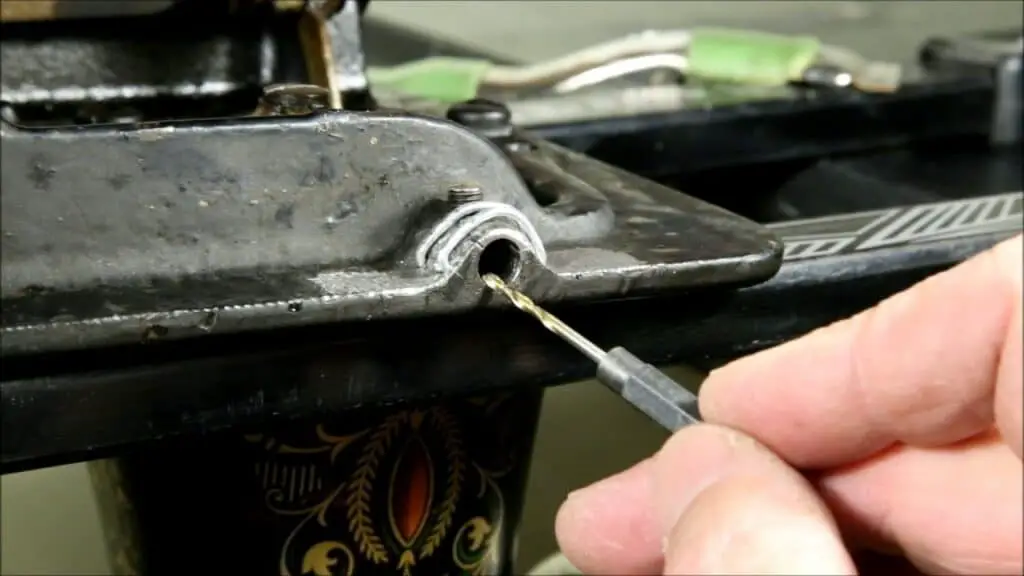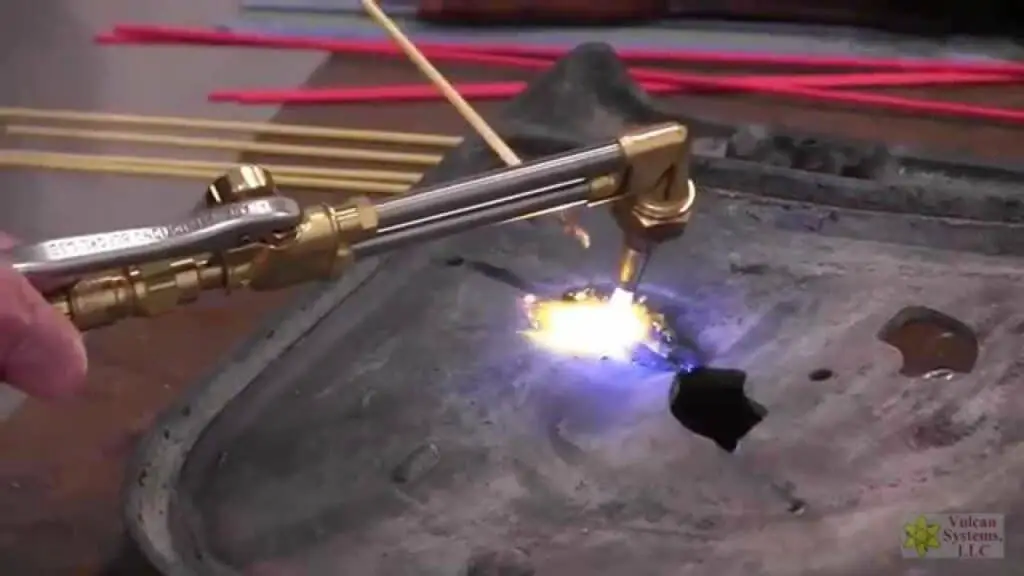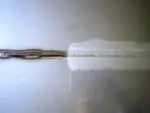Cast iron is used in a variety of industrial and residential projects since it is a very important metal that is utilised in a variety of applications ranging from stoves to motors. However, cast iron is fragile by nature and if not properly maintained, it is prone to fractures and cracks.
It can be a hassle when your cast iron cracks and breaks. But you need not worry because fixing it is hassle free and effortless.
A JB weld can be used to repair cast iron. They act as glue, stick to cast iron, and successfully seal the fracture. The procedure does not need welding and is simple to carry out. When fixing, it also establishes a tight bond that does not break easily.
Let us take you step by step on how to fix cast iron using JB weld.
Step 1: Gather all supplies required for the process.
Before beginning the procedure, you need to check that you have all of the necessary ingredients. These are the things you will require-
-
-
- Water.
- A piece of cardboard.
- A putty knife
- Dishwashing liquid.
- Sandpaper.
- Rag.
- JB weld.
-
Step 2: Purchase the JB weld from a nearby retailer.
Consider certain aspects before acquiring the JB weld, like its quality, and get one that will last longer without damage or corrosion.
Moreover, be certain that the JB weld is to your liking and meets your needs.
Step 3: Remove any existing dust and rust.
Sand the cast iron with 80-grit sandpaper to remove any paint or corrosion that may be present. Instead of circular movements, use back and forth motion to avoid widening the crack.
This procedure aids in the cleaning of the iron cast surface by eliminating impurities that have accumulated on top of the fracture.
Before you begin mending the cast iron, you have to make sure the surface is clean.
Step 4: Scrub the surface with soap and water.
Clean the cracks and surface area thoroughly using a cloth, water, and soap. Allow the cast iron to dry before proceeding.
Make certain that you clean all locations, including the surrounding regions.
Allow the iron to cure fully before proceeding to the following step.
Step 5: Fill the cast iron with JB weld and squeeze away any excess.
Follow the manufacturer’s directions first, and then fill any holes in the iron metal, being careful to push them out on a flat, non-bending surface.
To complete the operation, you’ll need a putty knife and a scrap of cardboard. To avoid harming yourself, use the knife with caution.
Step 6: Evenly distribute the putty on the iron.
The putty mixture is then smeared into and over the broken cast iron. You should use a putty knife to scrape out any extra mixture before it hardens.
It is advised that you wait 24 hours after removing the extra putty before handling the restored cast iron. Scrape extra putty with caution to avoid damaging the iron.
Step 7: Paint the cast iron.
After completing the preceding operations, the final step in mending cast iron objects with epoxy putty is to paint over the filled fracture.
This increases durability and ensures that the mended damaged section is consistent with the remainder of the cast iron item.
Paint it to your liking and with whatever paint you like. If the feature does not work, seek expert assistance or contact the original manufacturer for further information.
See also: Can You Weld Cast Iron to Steel?
However, there are other ways through which you can fix your broken cast iron. Let’s look at them.
Brazing
Despite its rigidity, cast iron is prone to fractures and cracks. Brazing is another excellent method for repairing fractures that does not require welding.
Brazing, as opposed to the usual welding procedure used to repair metal, employs very little heat to restore your cast iron parts. This method is widely used to repair fractures in cast iron products.
It does take some practice, but once you get beyond the initial learning process, you will discover that this strategy is really successful.
Brazing is a method of uniting metal components by melting or pouring what is known as a filler rod into the joint, thus integrating numerous pieces into a single product.
Let us look into it step by step-
1.) The first step is to choose a filler rod. This is the portion that will be inserted into the cast iron crack or joint. It will serve as a combining agent for the parts. Filler rods are often constructed of brass or nickel.
2.) The cast iron piece must now be prepared for the brazing procedure. It is a good idea to sand it to ensure a smooth surface and the formation of a strong connection.
After grinding or sanding the rough edges, clean the surface to remove any particles or debris. These might interfere with the brazing process.
3.) After that, the cast iron component is required to be heated. Using a brazing torch on the cast iron’s cooling sections may result in more warping and cracking.
As a result, various heat sources, such as a weed burner, an oven, or a gas grill, can be used to gradually heat the cast iron portion.
4.) You have to heat the surface sufficiently to induce the filler material to melt and flow into the fracture or joint. Maintain the temperature with the flame at the surface so that the filler rod may flow evenly down the fracture and fill it.
5.) Your shattered pieces have now been reassembled. If you have a fractured item, the crack has been filled with brass material. The filler material would most likely be a different hue than the cast iron.
6.) Finally, place the mended portion in a sand-filled container and completely cover it with sand. Following the brazing technique, the cast iron should be cooled extremely slowly.
If the cast iron is allowed to cool in the air, it may break. It is advised to leave the repaired section in the sand for at least one day, and longer if needed.
Cold stitching
Cold stitching is a technique that involves using metal keys or stitches to keep the broken portions of a cast-iron product together.
Repairing fractures in a cast-iron object using cold stitching begins with drilling holes beside the crack, linking the holes together with a big chisel, putting metal keys into lengths of the holes to form a connection, and sewing them together to secure them in place with screws.
Let us look into it step by step:
1.) Check for any cracks in the cast iron
Considering the crack in issue is the first stage in the cold stitching process. This process is best suited for cast iron items with a thickness of 3/16 inch and a length of up to 1 foot.
2.) Holes should be drilled
Drilling holes along the fracture is the second stage in the cold metal stitching method. The holes should be spaced apart at regular intervals. A guide is needed for precise drilling of the holes along the fracture for best results.
3.) Connecting the rows of holes
After drilling the stitching holes, you must next sew them together. The perforations will make it easy to insert the keys, which will reinforce the broken cast iron.
4.) Insert the metal stitches or metal keys
The metal keys are the most important part of this operation. They provide the necessary strength to hold the damaged sections together after the repair. Cold metal stitching relies heavily on high-strength metal.
Otherwise, the process will have to be repeated since it may be unsuccessful.
5.) Putting the stitches together
It’s not enough to rely on the metal keys put into the fractured cast iron component. This is due to the fact that they may not be robust enough to sustain extreme pressure and heat, causing them to shatter.
6.) Getting rid of excessive material
Chiseling away excess material from the stitching screws and metal keys you’ve inserted is the final stage in the cold metal stitching procedure. Remove as much metal stuff as you can with the chisel.
Conclusion
A cracked cast iron piece is no doubt annoying, but it’s not the end of the world. You may easily fix it without having to weld it.
JB weld is one of the simplest ways to repair cast iron problems. You may skip traditional welding, which needs a lot of hard labor and experience, by using this approach. JB welding on cast iron results in a strong bond.
It attaches to metals and cast irons and efficiently closes fractures, keeping them intact for a long time.








